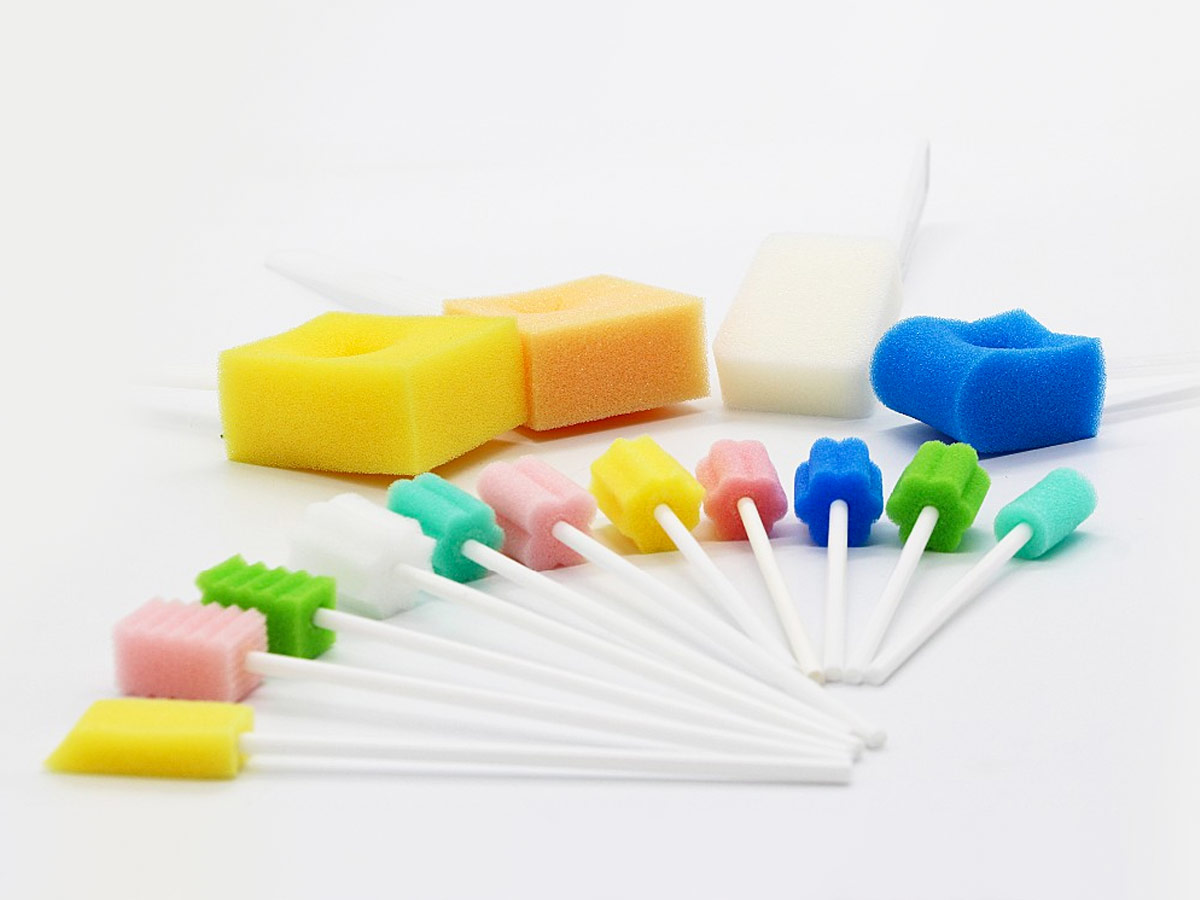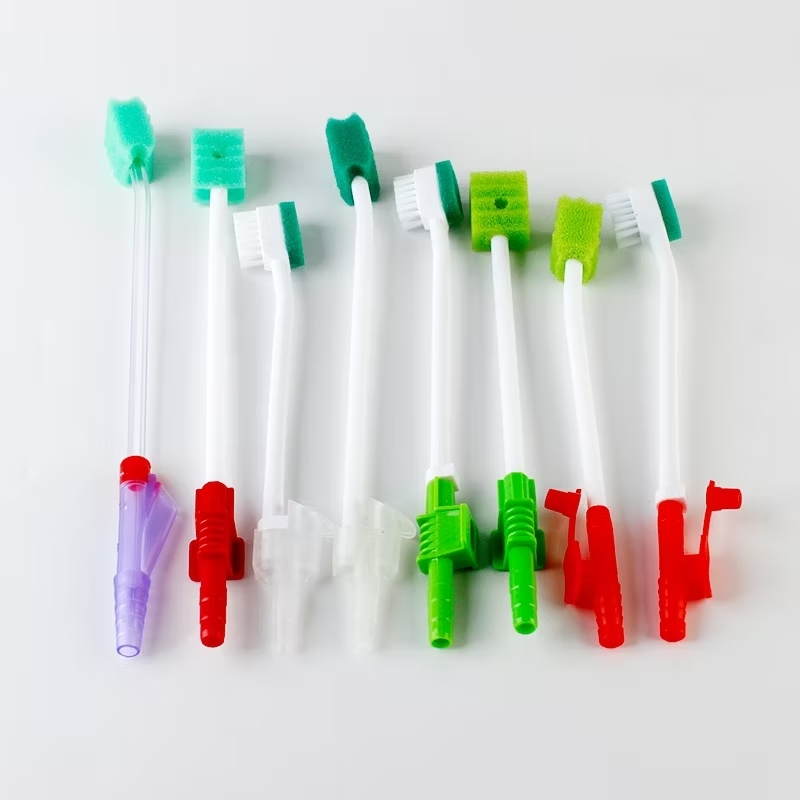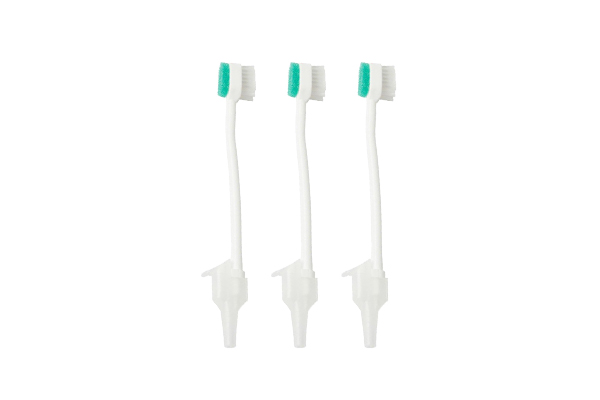Good oral hygiene is crucial for overall health, especially for those unable to brush due to illness, injury, or surgery. Oral care swabs offer a gentle cleaning solution, with tip shape and design influencing effectiveness, comfort, and safety.
This article examines various swab tip shapes, their uses, benefits, and guidance for caregivers in choosing the best option for patient needs.
What Are Oral Care Swabs?
Oral care swabs are small, disposable tools designed for patients who can’t use traditional toothbrushes, such as those recovering from surgery, the elderly, or individuals with disabilities. Made with soft, absorbent materials like foam or cotton, they come with a handle and can be dry or pre-moistened with mouthwash or saline. The swab tip is key to cleaning the teeth, gums, and tongue, helping remove debris and maintain oral hygiene.
Why Does the Tip Shape Matter?
The tip of an oral swab plays a critical role in determining the swab’s overall effectiveness and usability. The tip’s design influences its capacity to clean both soft and hard tissues, remove dirt, and reach various parts of the mouth. In addition, the design influences the comfort of the patient and the ease with which a caregiver can maneuver the swab.
The form of an oral care swab’s tip affects the following important factors:
- Access to Different Areas: The design of the tip affects how easily the swab can access difficult-to-reach areas, such as the back of the throat, the molars, or beneath dental appliances.
- Cleaning Efficiency: Different shapes and materials are better suited for cleaning specific areas of the mouth, such as the tongue, gums, or teeth.
- Comfort and Safety: A well-designed tip reduces the risk of injury or irritation, which is particularly important for patients with sensitive tissues or who are recovering from surgery.
- Versatility: Some swab tips are designed for specific uses, such as moisturizing the mouth, removing plaque, or providing antimicrobial benefits.
Understanding these factors can help caregivers select the most appropriate swab design to meet the needs of their patients.
Types of Tip Shapes and Designs
Oral care swabs come in a variety of tip shapes and designs, each suited to different tasks or patient needs. Below are the most common tip shapes found in oral care swabs and their respective advantages:
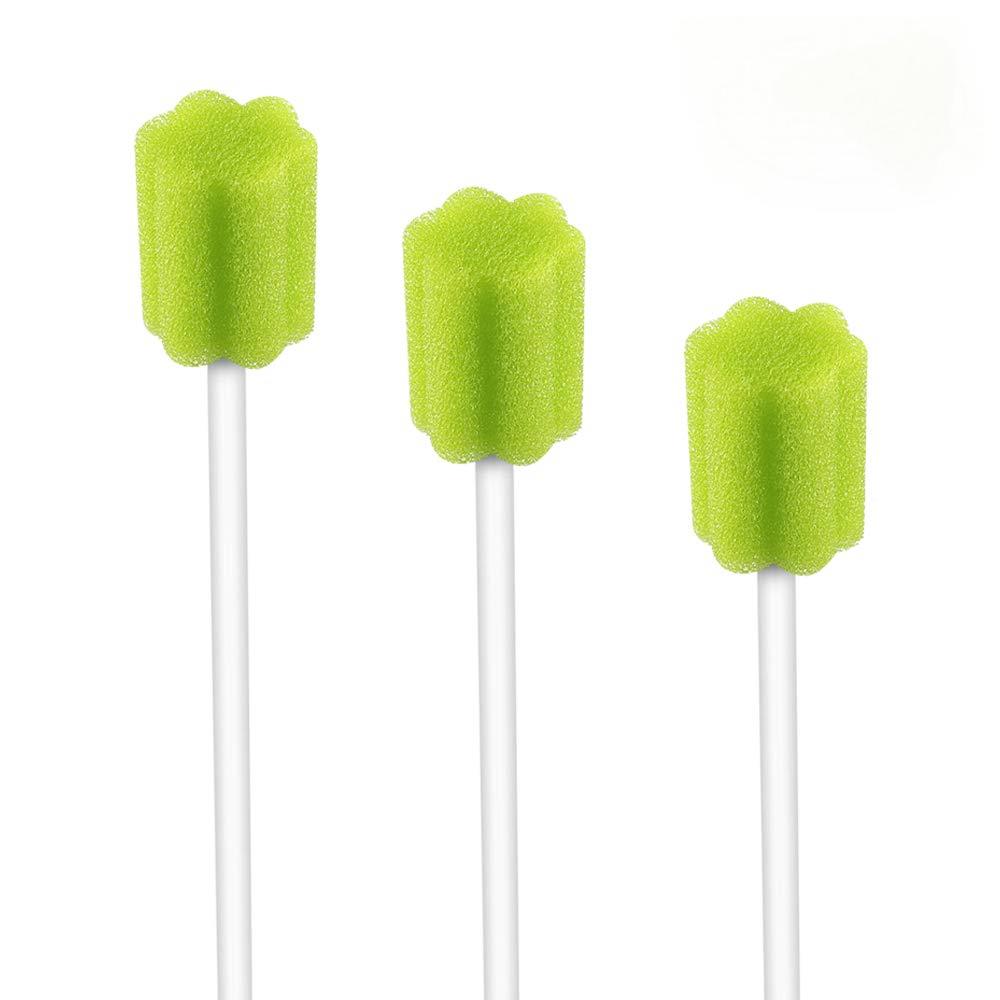
Round-tipped Oral Care Swabs
Round-tipped swabs are among the most common shapes used in oral care. The round shape provides a soft, even surface that is gentle on the mouth’s delicate tissues. These swabs are usually made with foam or soft sponge material, ensuring they do not cause abrasion or discomfort.
Round-tipped swabs are ideal for:
- Patients with sensitive mouths, as they minimize irritation.
- Gently cleaning the gums, cheeks, and tongue without scraping.
- Administering oral moisturizers, as the round shape easily covers larger areas.
Round-tipped swabs are widely used in hospitals and by home caregivers because of their versatility. They are often recommended for daily oral care in elderly or disabled individuals.
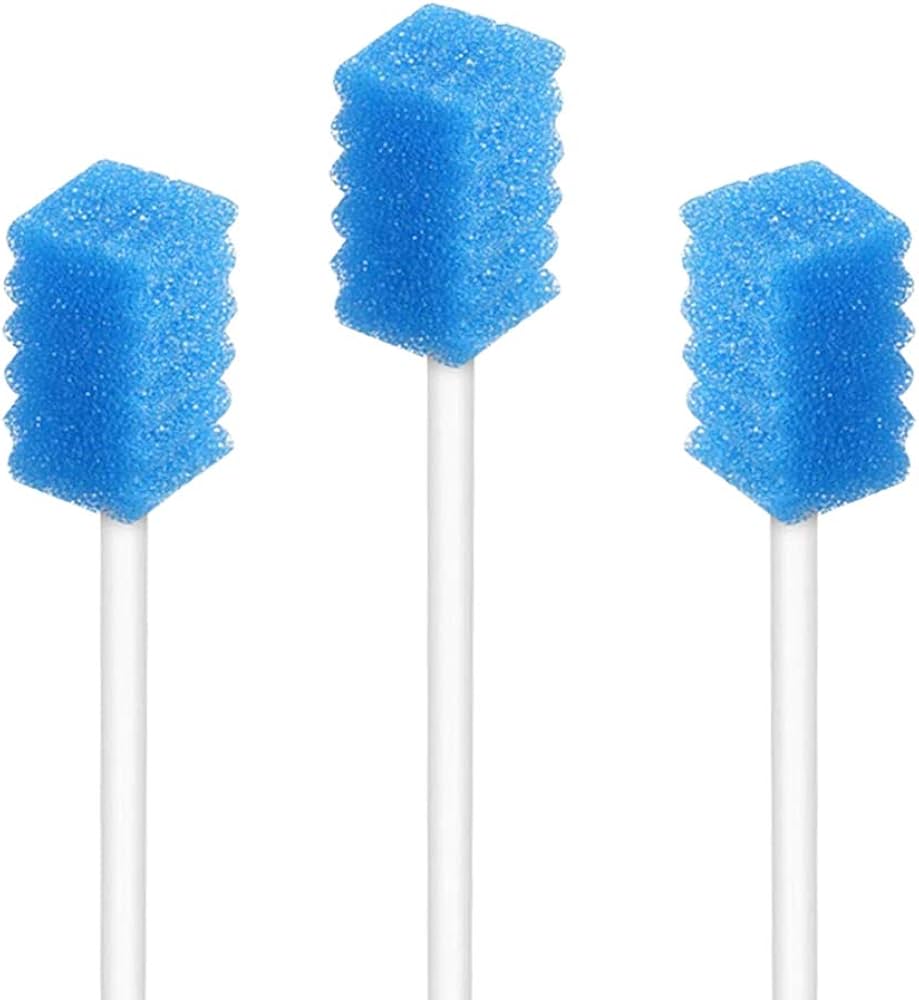
Square-Tipped Oral Care Swabs
Square-tipped swabs are characterized by their broader, flat surface. This design allows for greater control over the area being cleaned and often includes small, soft ridges to enhance the swab’s ability to pick up debris.
Square-tipped swabs are particularly effective for:
- Cleaning the tongue and removing bacteria build-up.
- Removing food particles stuck in the teeth or gums.
- Gently massaging the gums to stimulate blood flow.
Square-tipped swabs are well-suited for individuals who require a more comprehensive cleaning tool, such as those with significant plaque build-up or individuals who use the swab as an alternative to a traditional toothbrush.
Tapered-Tipped Oral Care Swabs
Tapered tips, also known as pointed or cone-shaped tips, are designed to reach into narrow spaces and grooves that other swab shapes might miss. These swabs typically have a sponge or foam material that tapers towards the end, creating a pointed tip that is still soft and flexible.
Tapered-tipped swabs excel in:
- Reaching tight spaces, such as between teeth or near the gum line.
- Targeting small, hard-to-reach areas where bacteria and debris accumulate.
- For patients with braces or other dental appliances, precise cleaning is essential.
These swabs are highly effective in dental offices and for individuals with braces or specific dental needs at home. Tapered swabs allow for thorough cleaning without the risk of damaging delicate areas of the mouth.
Flat-Tipped Oral Care Swabs
Characteristics and Design Flat-tipped swabs are defined by their slim, rectangular tip. This shape provides a balance between precision and broad coverage, making them suitable for both targeted cleaning and general use. Flat-tipped swabs are usually made of foam, which allows them to hold moisture and absorb debris effectively.
Flat-tipped swabs are versatile and useful for:
- General oral cleaning, especially on the tongue and cheeks.
- Clearing food debris and plaque from the gum line.
- Applying medications or moisturizers to specific areas of the mouth.
Recommended Settings Flat-tipped swabs are ideal for general oral care in both clinical and home settings. They are often included in hospital kits due to their balance of coverage and precision, making them a practical choice for a variety of patients.
Other Design Features to Consider
In addition to tip shape, several other design features can influence the effectiveness of oral care swabs:
- Texture: Some swabs have a ridged texture that helps to dislodge debris more effectively, while others are smooth for a more comfortable experience.
- Material: Foam is a common material, as it is both soft and absorbent, but other materials like sponge or gauze may be used for specific purposes.
- Handle Length: For caregivers, longer handles offer better reach, while shorter handles are easier for individuals performing self-care.
- Moisture Content: Some swabs come pre-moistened with a saline or antiseptic solution, while others are dry and require dipping before use.
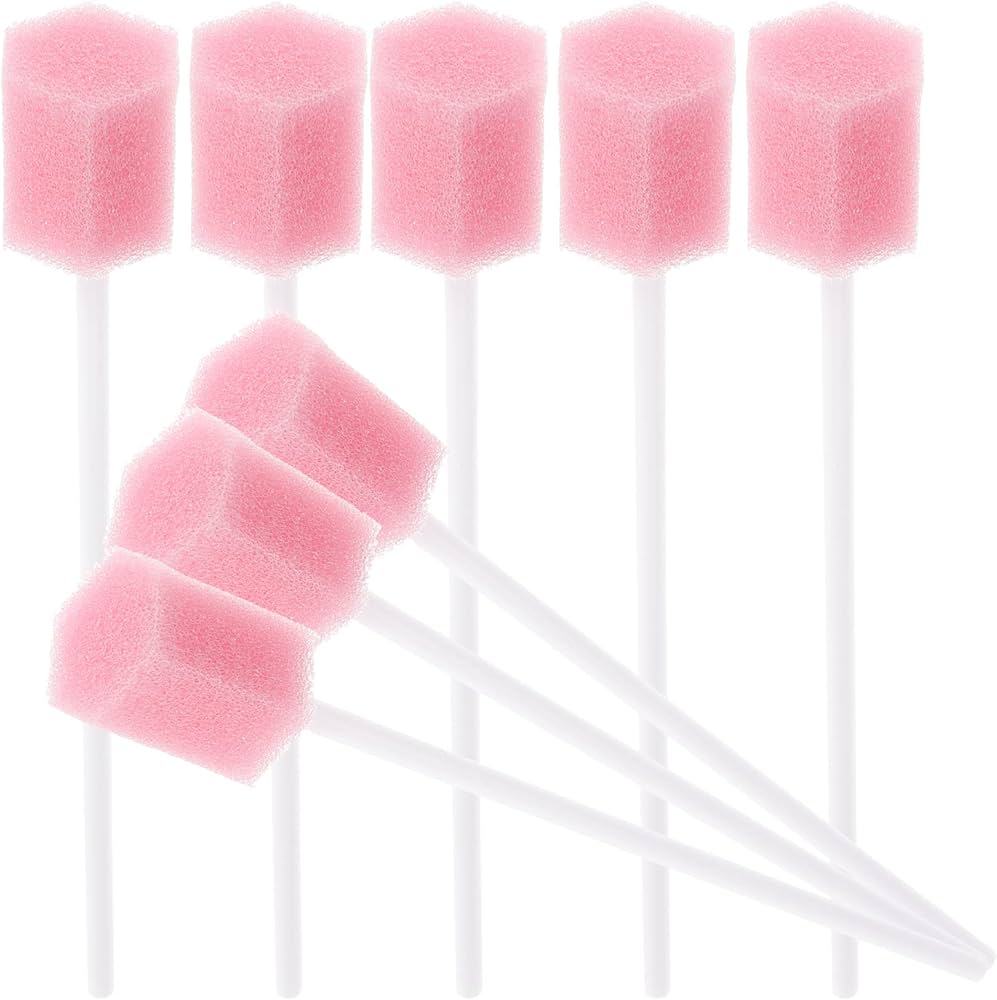
Practical Tips for Using Oral Care Swabs
Selecting the right oral care swab tip design is only part of the equation; proper use of the swab is just as critical to ensuring effective and comfortable oral hygiene. Caregivers should consider the following tips to maximize the benefits of using oral care swabs:
1. Proper Technique for Using Oral Care Swabs
- Gentle Movements: Regardless of the swab tip shape, it’s important to use gentle, sweeping motions when cleaning the mouth. Avoid pressing too hard on the tissues, especially in patients with delicate gums or those recovering from surgery. For swabs with pointed tips, carefully target specific areas such as the back of the throat or between the teeth, but always use a light touch to avoid injury.
- Work in Sections: Divide the mouth into sections, such as the upper teeth, lower teeth, gums, and tongue, to ensure that every area is thoroughly cleaned. For patients with dental appliances, it’s important to clean under the dentures or braces to prevent plaque buildup.
Use of Moisture: If the swab is not pre-moistened, caregivers can moisten the swab with a mild mouthwash or saline solution. For patients with dry mouth, cotton-tip swabs can be especially helpful in moisturizing the mouth while cleaning.
- Rotate Swabs Regularly: After a few swipes or when the swab becomes too dirty, dispose of it and use a new one. This prevents transferring bacteria and debris back into the patient’s mouth. Avoid reusing swabs, as they are designed for single use only to maintain hygiene.
2. Handling Special Cases
- Post-Surgical Patients: Patients recovering from oral surgeries (such as tooth extractions, jaw surgery, or surgeries involving the mouth and throat) often require extra care to avoid irritating healing tissues. Use a round-tipped or Tapered-Tipped swab to gently clean around the affected area without causing discomfort. Avoid vigorous scrubbing, and be sure to consult with the medical team about specific oral care guidelines post-surgery.
- Patients with Sensitive Gums: For elderly patients or those with gum disease (such as gingivitis or periodontitis), a round-tipped swab is preferable as it minimizes discomfort. It’s also essential to avoid excessive pressure on the gums to prevent further irritation or bleeding. To lessen bacterial accumulation, caregivers could also think about using a swab with antibacterial qualities.
- Children & Infants: Babies and young children have smaller mouths and very sensitive oral tissues. A round-tip swab designed specifically for infants should be used to clean their gums, teeth (once they come in), and tongue. These swabs are gentle, which is vital to avoid harming delicate oral structures. Additionally, consider using pre-moistened swabs for extra care and ease.
- Patients with Dry Mouth (Xerostomia): Speaking or swallowing can be uncomfortable and challenging when you have a dry mouth. Cotton-tip swabs work best for patients with xerostomia, as they help remove moisture from the mouth while providing relief. Using swabs pre-moistened with a mouthwash containing moisturizers or saline solution can be very beneficial in these cases.
- Oral Appliance Care: Patients who wear dentures, partials, or other dental appliances often face challenges in keeping their mouths clean. A flat-tip swab or pointed-tip swab with a textured head can be used to clean both the teeth and the surfaces of dentures. These swabs can help remove plaque and food particles that get trapped in appliances. Antimicrobial swabs can also help prevent infections associated with poor oral hygiene around dental devices.
3. Choosing the Right Swab Based on Care Setting
Different care settings—hospital, long-term care facility, home care, or hospice—may require different approaches when selecting oral care swabs. Here are some considerations based on the care environment:
- Hospitals and Acute Care Facilities: Patients in hospitals often require frequent oral care, especially those who are intubated, post-surgery, or in critical care. In these environments, long-handled swabs with round tips or flat tips may be most appropriate, depending on the patient’s condition and ability to assist with care. Antimicrobial swabs are also frequently used to lower the incidence of mouth infections.
- Long-Term Care and Nursing Homes: Patients in long-term care settings, such as nursing homes, may have varying degrees of mobility. Cotton-tip swabs are often used for moisturizing the mouth and cleaning sensitive tissues. Patients who have dentures or oral appliances may benefit from flat-tip or pointed-tip swabs for targeted cleaning.
- Home Care: Home caregivers should consider the patient’s ability to open their mouth and manage their own hygiene. For most adult patients, medium-sized flat-tip or round-tip swabs are appropriate. However, for patients with mobility issues or those who are bedridden, long-handled swabs with pointed tips for precision cleaning may be necessary.
- Hospice Care: In hospice care, comfort is paramount. Swabs that are gentle on the mouth, such as round-tip swabs, are ideal for providing comfort while maintaining hygiene. Moisturizing swabs may also be used to alleviate the discomfort of a dry mouth, which is common in terminally ill patients.
Benefits of Choosing the Right Swab Tip Design
- Enhanced Patient Comfort
Soft, rounded, or cotton tips reduce discomfort, especially for sensitive or post-surgery patients, ensuring a more comfortable experience.
- Improved Cleaning Efficiency
Different tip designs meet specific cleaning needs: flat tips for plaque removal and pointed tips for precise cleaning in tight areas, ensuring thorough oral hygiene.\
- Oral Health Protection
The right swab prevents plaque, gum disease, and infections, especially for patients unable to brush regularly, promoting better oral health
- Safety and Hygiene
Antimicrobial and single-use swabs prevent bacteria spread and cross-contamination, ensuring safe and hygienic oral care.
Conclusion
The shape and design of an oral care swab tip are crucial for effective, comfortable, and safe oral hygiene for patients who cannot care for themselves. By considering the patient’s age, condition, and mobility, caregivers can choose the right swab—whether round-tip for gentle care, flat-tip for plaque removal, or pointed-tip for precision. The correct swab helps maintain oral health, prevent infections, and improve comfort, leading to better outcomes and quality of life.

